Auctions
Christie’s Postwar and Contemporary London Sale Brings in a Lackluster $72.7 Million, Its Lowest Total Since 2010
The auction saw all but one lot sell—but the final result tumbled 16 percent from the equivalent sale last year.
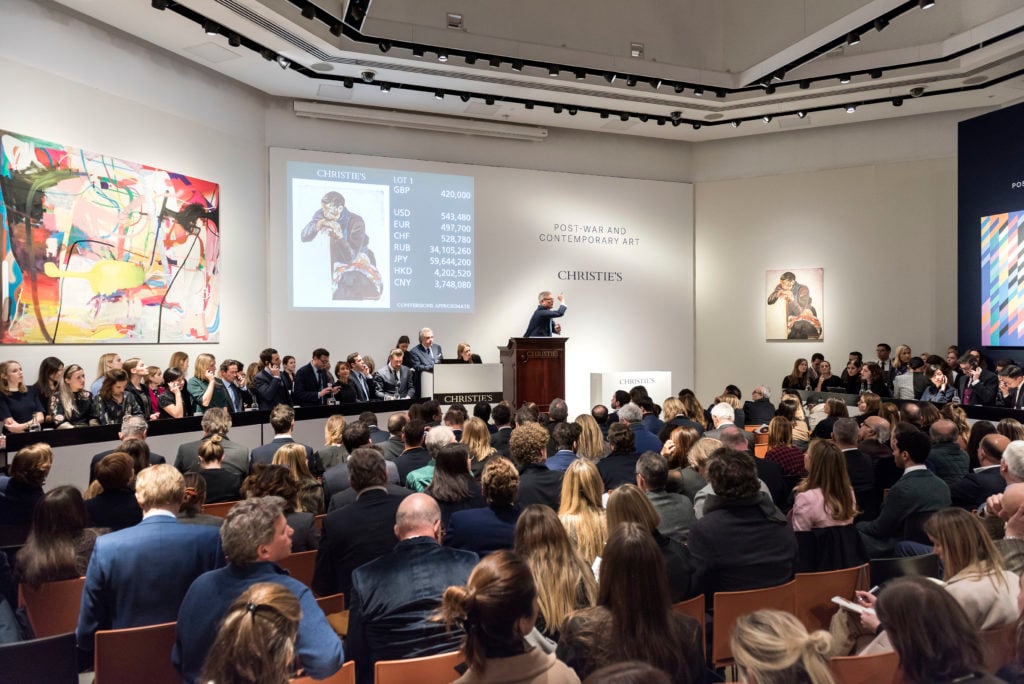
The auction saw all but one lot sell—but the final result tumbled 16 percent from the equivalent sale last year.

Colin Gleadell

Christie’s was managing expectations from the start for its postwar and contemporary art auction on Wednesday night, which carried the lowest pre-sale estimate for a London winter evening sale in the sector since 2011.
In the end, the sale (which carried a presale estimate of £41.6 million to £61.3 million, or $53.9 million to $79.4 million) generated the lowest total in a decade, when the equivalent sale made £39.1 million in 2010. This year’s total—£56.2 million ($72.7 million)—was down 14.6 percent from 2018. (As always, final prices include the buyer’s premium; presale estimates do not.)
Blame can be attributed to Brexit indecision and General Election unease during the peak business-getting period. But Christie’s has also struggled to ramp consignments back up after it canceled its June sales in London in 2017 and 2018, and then restored a slimmed-down version last year. Making matters more difficult, the house has been left with a young and relatively inexperienced team in London since the departure of its long-term department leader, Francis Outred.
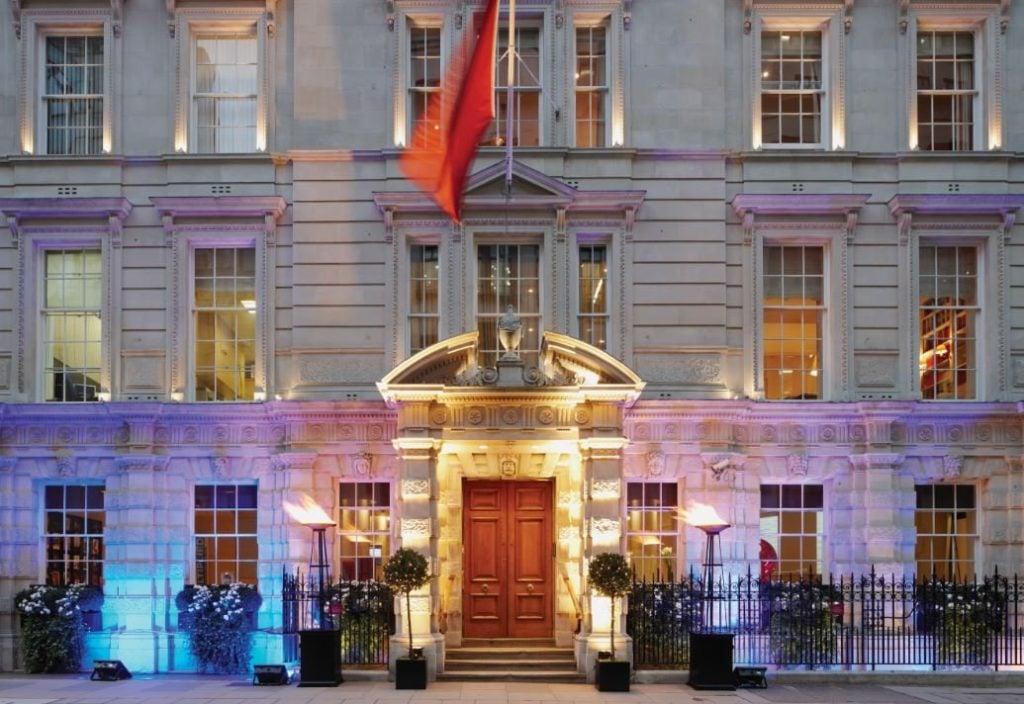
The facade of Christie’s London auction house. Courtesy of Christie’s.
And while Sotheby’s, even in this challenging climate, offered six lots worth over £5 million at its equivalent sale on Tuesday, Christie’s had none. The highest estimated lot was a Basquiat from the coveted year of 1982, titled The Mosque, from the collection of the trader-dealer Mugrabi family. The work, which was estimated at £4 million to £6 million and carried a third-party guarantee, contained an inscription that read “going to heaven” and a twin-towered mosque. The subject may have been sensitive for some bidders—and indeed, there seemed to be only one (probably the third-party guarantor), who bid with a US specialist and bought the work below estimate for £3.9 million ($5.1 million).
American bidders were evidently more comfortable with Andy Warhol’s array of American sports stars, known as the “Athletes Series,” from the estate of collector Richard L. Weisman, who died in 2018. In 1977, Weisman commissioned ten 40 x 40 inch portraits from Warhol—Muhammad Ali, Jack Nicklaus, O.J. Simpson, and Pelé among them—sometimes with eight or ten differently colored versions. According to the Warhol catalogue raisonné, there are 112 in all, a third of which are now in institutional collections. In 2007, one complete set was offered by London dealer Martin Summers for a reported $28 million, but didn’t sell; another set sold for $5.7 million in 2011.
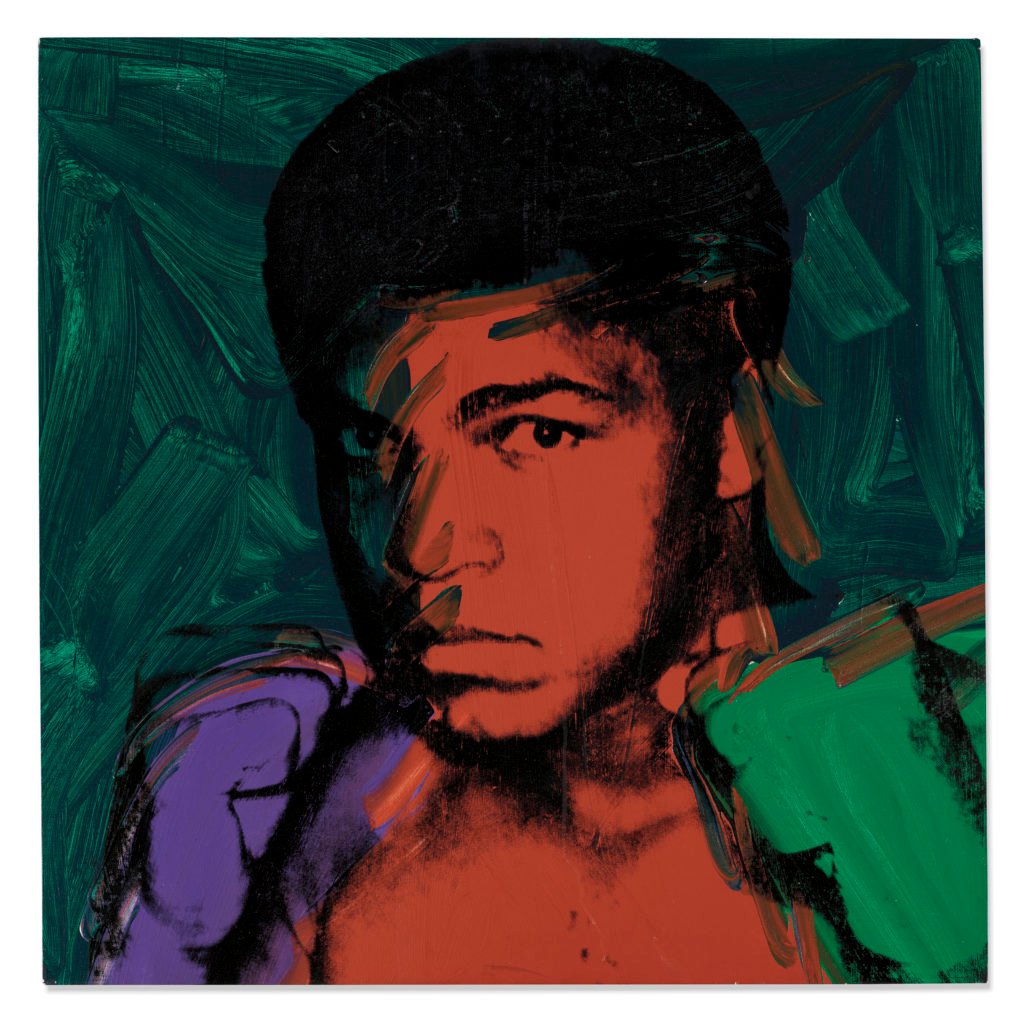
Andy Warhol, Muhammad Ali (1977). Courtesy of Christie’s.
The series found an eager audience last November in New York, when Weisman’s estate offered a set at Christie’s. The works sold individually above estimate for a combined $15 million, led by a $10 million portrait of Muhammed Ali bought by Lévy Gorvy Gallery (which advisor Josh Baer suggested may have been purchased for the art-loving casino owners Frank and Lorenzo Fertitta).
In London, a separate set carried similar estimates. The painting of Ali was again the most sought-after, selling to an American phone bidder against Lévy Gorvy within estimate for £4.97 million ($6.4 million). (The gallery had more success with a two-foot flower painting by Warhol, which they secured above estimate for £2 million/$2.7 million.) Art advisor Jude Hess successfully picked up the portrait of Brazilian footballer Pelé within estimate for £575,250 ($744.374). Apart from the portrait of golfer Jack Nicklaus, none made as much as their equivalents in New York, when they were fresher to market.
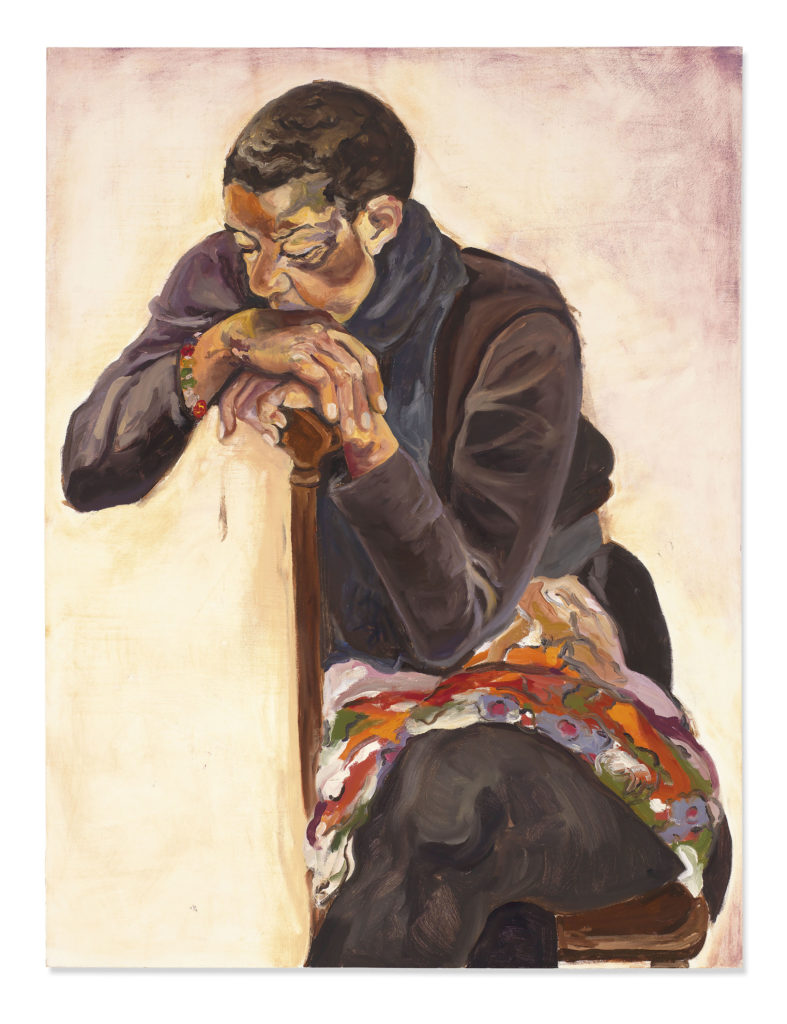
Jordan Casteel, Mom (2013). Courtesy of Christie’s.
As at Sotheby’s, the sale was front-loaded with hot young artists. Only the fourth work at auction by the 30-year-old Jordan Casteel, whose solo show opens this month at the New Museum in New York, Mom (2013), a reflective portrait of her mother, carried the highest estimate yet for her work at £150,000–250,000.
So far, everything by Casteel has doubled or tripled its estimate at auction, and Mom continued the momentum, selling for a record £515,250 ($666,734) to a phone bidder who beat out numerous contestants, including art advisor Gabriela Palmieri. A veteran of Sotheby’s contemporary department, Palmieri was more successful with a set of 22 small oil panels by Günther Förg, which she bought for a mid-estimate £1.3 million ($1.7 million), a new record for the German artist.
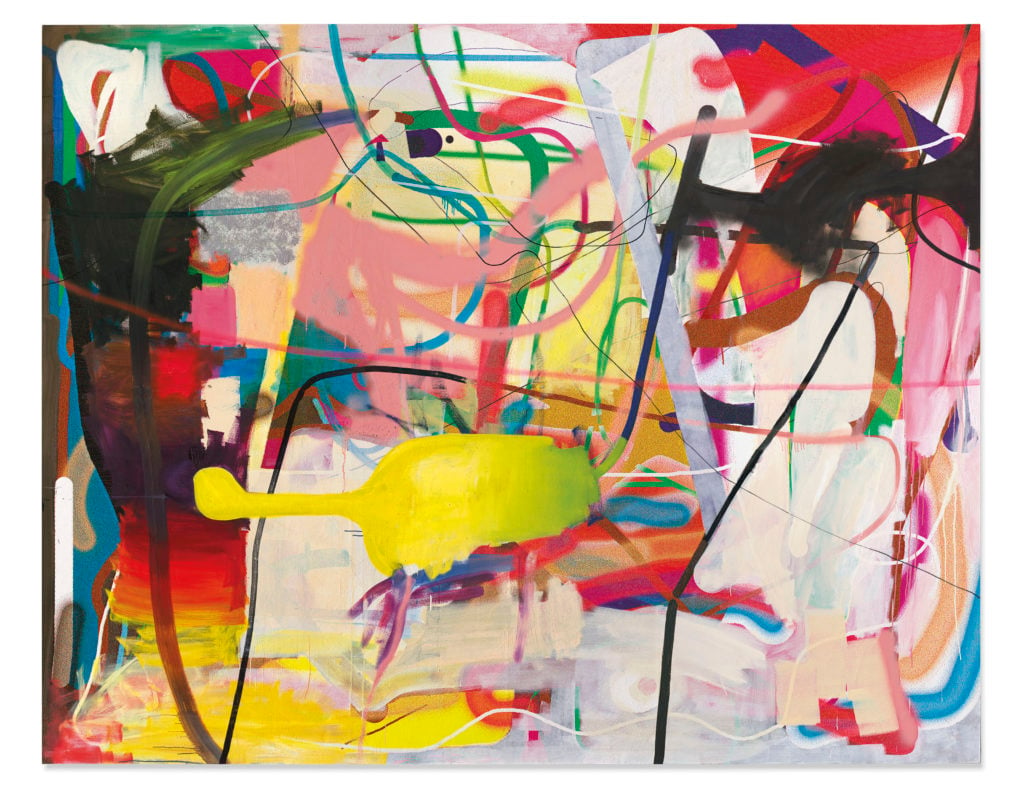
Albert Oehlen, Mission Rohrfrei (Down Periscope) (1996). Courtesy of Christie’s.
Christie’s scraped around for some more records to liven up their post-sale press release and found one for a computer-generated work by Albert Oehlen, which sold to dealer Daniella Luxembourg above estimate for £3.2 million ($4.1 million). Another record of sorts was set for Bridget Riley’s colorful Gaillard (1989), which sold within estimate for £2.3 million ($2.96 million) to London dealer Alan Wheatley, beating out an underbidder from Asia. (It was a record, Christie’s said, for a “late” Riley.) Gaillard represented one of the better returns of the evening, having previously sold in 2007 for £401,350.
Other prominent works placed early in the sale were also by women—Tschabalala Self, Dana Schutz, and Cecily Brown—which all attracted bidding from Asia. Brown’s Girl Trouble (1999) was the only one to come in below estimate at £1.5 million ($1.9 million), possibly because it was flipped from a sale in 2018, when it was bought for $1.8 million.

Günther Förg, Untitled (1990). Courtesy of Christie’s.
Christie’s then reminded us that all three artists (along with several other young auction favorites) are included in the current “Radical Figures” exhibition at the Whitechapel Art Gallery, a show dedicated to contemporary figuration. Notably, however, Christie’s did not mention that they are the lead sponsors of the show—which, however well-intentioned, has the added bonus of boosting the value of the work in the marketplace.
Some, like myself, think that this trend is toeing the line of appropriateness. While it is commendable that auctioneers support the arts, and dealers, their artists (there is a long list of interested dealers supporting this show as well), institutions supported by public funding should be wary of the influence the commercial sector can have on their decision-making and programming. The market, as we see in each cut-throat auction, generally acts in its own interest.